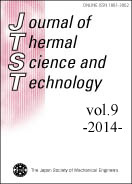Volume 9, Issue 2
Displaying 1-10 of 10 articles from this issue
- |<
- <
- 1
- >
- >|
Papers
-
2014 Volume 9 Issue 2 Pages JTST0006
Published: 2014
Released on J-STAGE: July 04, 2014
Download PDF (786K) -
2014 Volume 9 Issue 2 Pages JTST0007
Published: 2014
Released on J-STAGE: July 28, 2014
Download PDF (1659K) -
2014 Volume 9 Issue 2 Pages JTST0008
Published: 2014
Released on J-STAGE: August 14, 2014
Download PDF (748K) -
2014 Volume 9 Issue 2 Pages JTST0009
Published: 2014
Released on J-STAGE: August 14, 2014
Download PDF (694K) -
2014 Volume 9 Issue 2 Pages JTST0010
Published: 2014
Released on J-STAGE: August 20, 2014
Download PDF (2816K)
Short Paper
-
2014 Volume 9 Issue 2 Pages JTST0011
Published: 2014
Released on J-STAGE: September 09, 2014
Download PDF (1213K)
Papers
-
2014 Volume 9 Issue 2 Pages JTST0012
Published: 2014
Released on J-STAGE: October 06, 2014
Download PDF (822K) -
2014 Volume 9 Issue 2 Pages JTST0013
Published: 2014
Released on J-STAGE: November 25, 2014
Download PDF (1669K) -
2014 Volume 9 Issue 2 Pages JTST0014
Published: 2014
Released on J-STAGE: December 17, 2014
Download PDF (2239K) -
2014 Volume 9 Issue 2 Pages JTST0015
Published: 2014
Released on J-STAGE: December 17, 2014
Download PDF (2712K)
- |<
- <
- 1
- >
- >|
